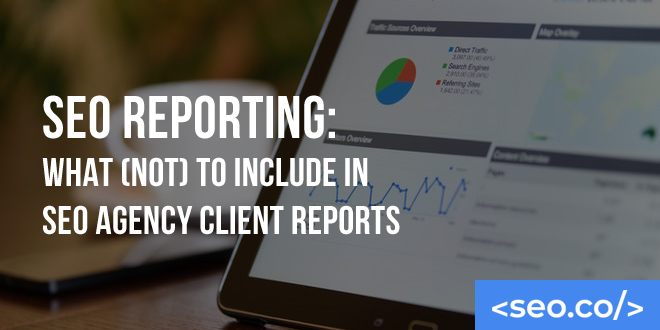
SEO Reporting: What (Not) to Include in SEO Agency Client Reports
A comprehensive, perfect SEO report summarizes important data, gives insights on the noticeable fluctuations, and provides valuable suggestions. Additionally, it educates a client on the work you have done as an SEO consultant and why you chose specific methods. On the other hand, a bad SEO report is laden with useless data, providing no insight to the client. While many SEO reports vary depending on your work and how you create it, you can read ahead to look at our take on what a good SEO report should entail. Client SEO Reports It is essential to gauge a website’s performance in search engines. SEO reports provide insights into performance in search engines, focusing on keyword rankings, organic traffic, and domain metrics. Additionally, they include the works of in-house, freelancer or SEO agencies. Planning and effectively carrying out the work are essential components of good SEO reports. These SEO reports analyze the combination of work and planning to gauge their effect because, without your SEO reporting analysis, you can’t figure out if it’s working or not. However, an SEO report is mainly for your client to understand what you are doing and to monitor the key performance indicators (KPI) to evaluate performance. The SEO report is the only source of information to see the effects of the work you do. An SEO report needs to be easily understandable for your clients to know they are not wasting their money on your work. There are three essential aspects that a good SEO report should show: SEO Insights Quality SEO reports highlight any knowledge you can provide regarding your client’s work, especially identifying issues and areas that need improvement in the coming months. SEO Campaign Progress Reports As important as it is to show your client why they hired you, it is equally necessary to show your progress. For instance, SEO reports should show the growth their site has undergone in a month with your SEO efforts and the improvements you have made since the last one. Recommendations Proper SEO reporting includes any recommendations you can give to the client that can help them reach their goals. Your client pays you to see improvement on their site performance, so they need to understand the methods you employ for their site and track its progress. Every client needs evidence that your SEO techniques and efforts bring in a positive ROI for the company. An Ideal SEO Report For Clients While every client is different with varying preferences of what they want to see in an SEO report, there are some ideal things that every client is interested in and which should absolutely be included in their SEO report: Backlink Health: What types of backlinks point at the client’s site? Are there broken links that have surfaced that need to be fixed? SEO Health: A rundown of all the technical issues that can impact SEO visibility Sales: Show the clients how SEO techniques have helped gain tangible ROI, essential for their business Organic Traffic Progress: Show the effects of organic traffic on the site performance and the pages that drive the most traffic Ranking Progress: Indicate any changes in keyword rankings and track all potential drop-offs in search engine results pages An SEO report isn’t meant to display data that doesn’t provide value. Since this SEO report is for your clients to understand your SEO efforts through their site’s performance, it has to make sense to them. If you think you can outsmart your client with a SEO report filled with complex numbers and graphs that they can’t understand, they’ll probably cancel the service and fire your SEO agency. The clients pay you to drive their business by identifying trends and understanding the correlation between SEO reporting metrics. You need to provide an informative yet precise report for them to know they are not wasting their money, keeping them from leaving. Why Presentation Matters in SEO Reporting You might think that you want all the information possible in the SEO report and that you can just explain it to the client when they ask, but consider the fact that clients are seeking the most value possible for their time. This means they don’t want to feel like they’re in SEO 101 at every update meeting. They want to feel immediately that the SEO agency they have hired is trustworthy and providing value. They will likely be looking at how you work, even if they don’t understand it. So if you want to appear as trustworthy as possible, you want to present the data and SEO metrics in the client SEO report that your client values and explain how you acquired them, without making the process more difficult than necessary. You can start by identifying what the most important metrics for SEO agencies to report are. This is not all you will need to include in your SEO report, nor will every client want to know all of these metrics, but this gives you a baseline of what’s really important and what’s more akin to filler. Before you start asking the tough questions and taking stock of what your client actually wants, you can simplify your work by cutting out what you know is unnecessary. Like we said at the beginning, the clients aren’t SEO experts, but more importantly, they are expected to communicate your SEO report to other people within their business. If they can’t easily identify the information they need, how are they going to disseminate it properly? Next we will discuss client success and what SEO metrics they may expect to see and how to include them in SEO reporting. An SEO Report the Client Wants to See Rather than including every positive metric in your initial SEO report you can, or just assuming what the client will want to know about their performance values, it’s better to take the direct approach and find out directly from the client. As you’re bringing them into the company, find out what they expect to







